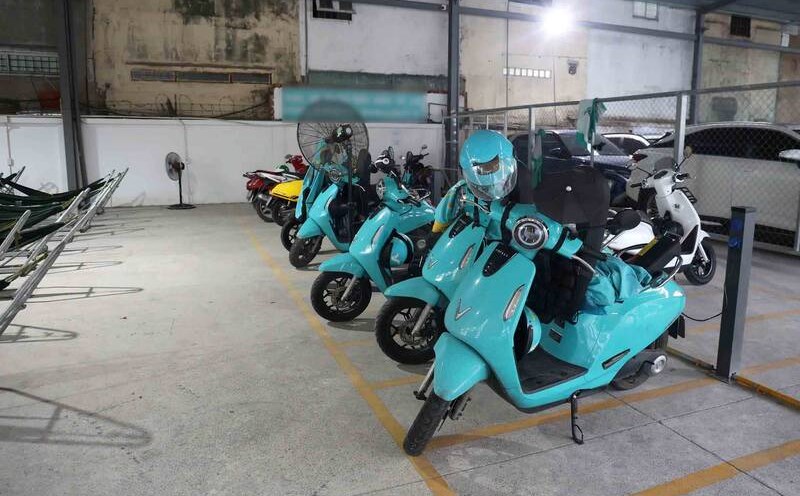Talking to Lao Dong Newspaper, Dr. Khuong Kim Tao, former Deputy Chief of Office of the National Traffic Safety Committee, said that to develop electric vehicle charging stations in Hanoi, it is necessary to have a systematic planning and regulations in advance.
Not every place can build an electric vehicle charging station. For example, many people think that converting gas stations to electric vehicle charging stations is unreasonable, because the area of small gas stations and the power system are not necessarily suitable. Currently, both gas stations and charging stations should be maintained. The limitation of gasoline vehicles needs to be gradually calculated to eliminate gas stations. For the area of gas stations, it is necessary to study the conversion of land use purposes to comply with synchronous planning, such as parks, cultural areas, etc.
For the construction of charging stations, it is necessary to study and plan systematically: is the land area suitable, can the electricity load meet or not?
Dr. Khuong Kim Tao added that in addition to planning centralized charging stations, Hanoi needs to study regulations on building mandatory charging stations in new apartment buildings. The construction of charging stations needs to be synchronized with the power line and arranged in a reasonable location to ensure safety and convenience for people.
Another issue that needs attention is: when developing electric motorbikes, people can charge at home. However, the manufacturer needs to provide detailed instructions, even send people to the site to check and instruct on the installation of chargers. When checking, technical staff need to survey the household's electrical system and advise on appropriate technical solutions, such as installing aptomat to ensure safety...
When we have planning and regulations ahead of us, we will consider supporting solutions. These solutions target charging station development units, people... to help them access the policy in the most convenient way.
Hanoi is aiming to limit gasoline-powered motorbikes in the Ring Road 1 area by July 1, 2026. By 2028, the scope will be expanded to Ring Road 2 for motorbikes and personal cars using fossil fuels; by 2030, it will be applied to the entire area in Ring Road 3.
The Ring Road 1 route currently passes through many central areas of Hanoi, running through main routes such as Tranhat Chan - Dai Co Viet - De La Thanh - Buoi - Vo Chi Cong - Nghi Tam - Yen Phu... with a total length of about 25km, an area of about 31km2 and an estimated population of nearly 600,000 people. The number of motorbikes alone has reached nearly 450,000 units. If we completely switch to electric vehicles, the charging station infrastructure and parking lot are one of the "bottlenecks" that need to be removed soon.
Immediately after Hanoi announced the plan to limit gasoline-powered motorbikes in the Ring Road 1 area, Hanoi Parking Area Exploitation One Member Co., Ltd. coordinated with relevant units to survey and develop a plan to arrange parking lots combined with charging stations to serve the process of converting personal vehicles to clean energy.
The first four locations eligible for charging station deployment include:
The vacant land from 621 to 768 De La Thanh Street;
Parking lot next to the Russian Embassy, near the Kim Ma - Cau Giay intersection;
Sidewalks and vacant land along Tran Chat Chan route, from Bach Mai to Lac Nghiep (more than 500m long);
Land plot in front of the headquarters of Vietnam National Shipping Lines at Xa Dan - Giai Phong intersection;
These are all areas with high population density, currently used as parking lots, so the integration of additional charging stations will effectively take advantage of the existing site, while not causing great disruption to the planning.
Charging stations not only serve personal motorbikes and electric cars, but also need to consider types of vehicles such as electric buses, electric taxis, electric delivery vehicles, etc. Therefore, infrastructure of stops, parking lots and charging places plays a very important role.
Previously, speaking to the press, Mr. Nguyen Duc Vinh - Deputy Director of Hanoi Parkingage Site Exploitation One Member Co., Ltd. - said that the unit is currently managing more than 150 parking lots, through a survey, there are about 40 locations that can install car charging stations.
According to Mr. Vinh, out of the 4 locations being studied, there are 2 possible locations to install charging stations in the near future, which are the Tran Chat Chan street area and the area in front of the headquarters of Vietnam Maritime Corporation. For the remaining 2 locations, because they are located in the construction area of the Ring Road 1 project, they can be implemented after the project is completed.
According to the Hanoi Department of Construction, up to now, there have been about 1,000 charging stations installed in the area by V-Green Global Charging Station Development Joint Stock Company, including both private and public stations. These include 57 large-capacity public stations (120 - 150kW), 259 AC/DC mixed-use stations and 684 private stations using rotary electricity.
In addition, some other enterprises have also actively proposed investing in shared charging station infrastructure such as TMT Automobile Joint Stock Company and EVG Group. These units wish to use public spaces such as shopping malls, parks, bus stations to implement the model of socializing charging stations, and have submitted a complete proposal for technical standards, management and operation and investment plans.











